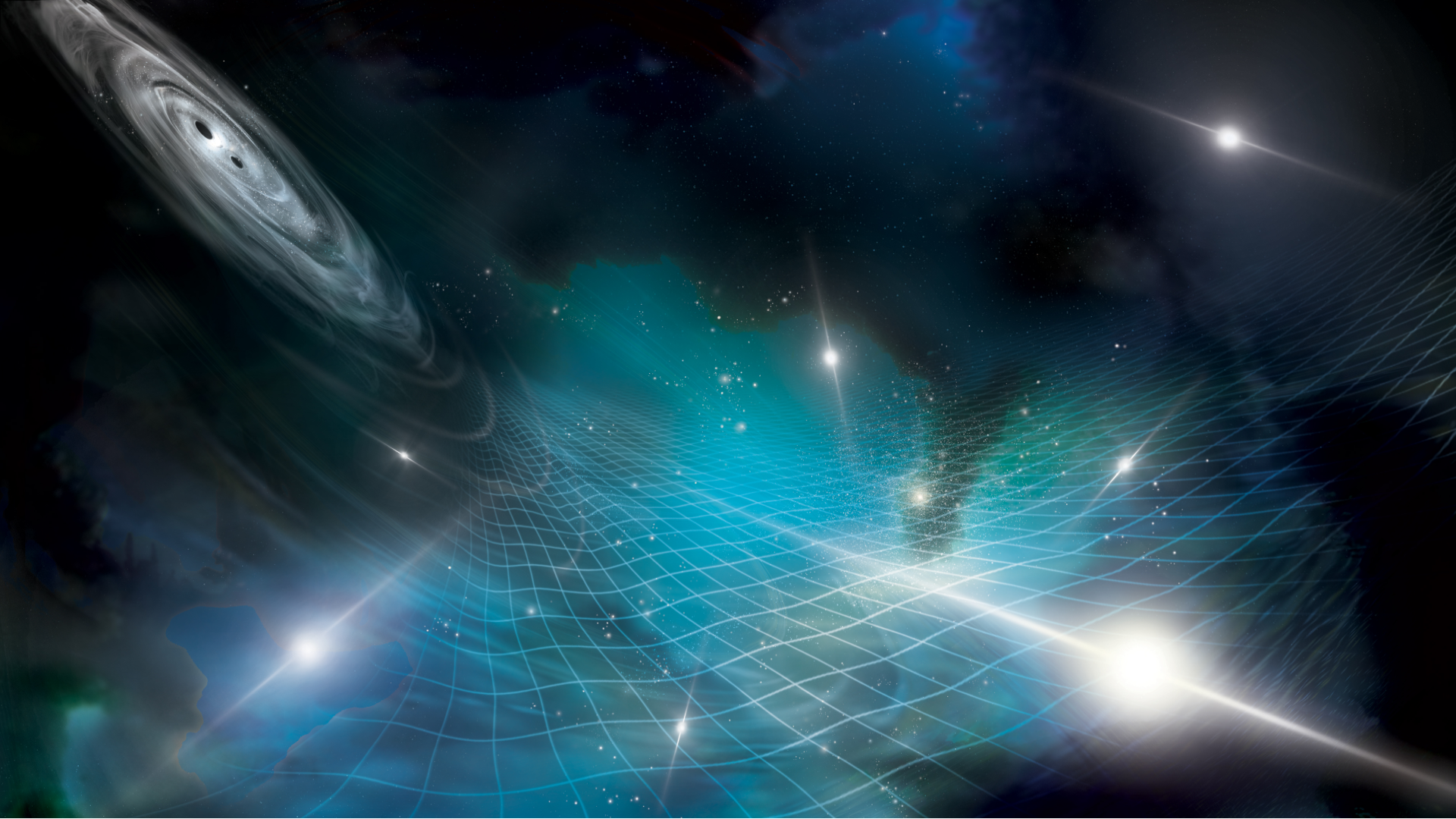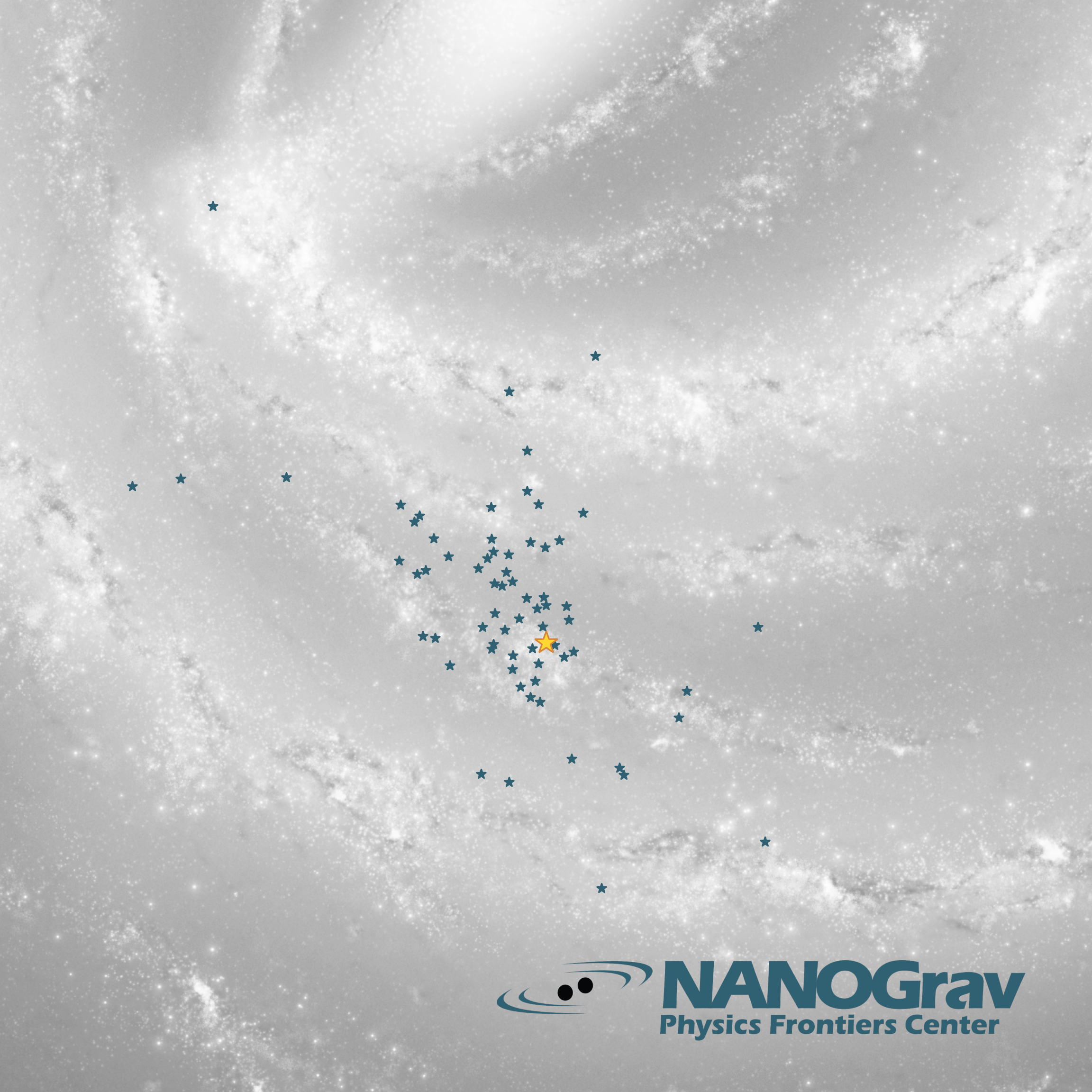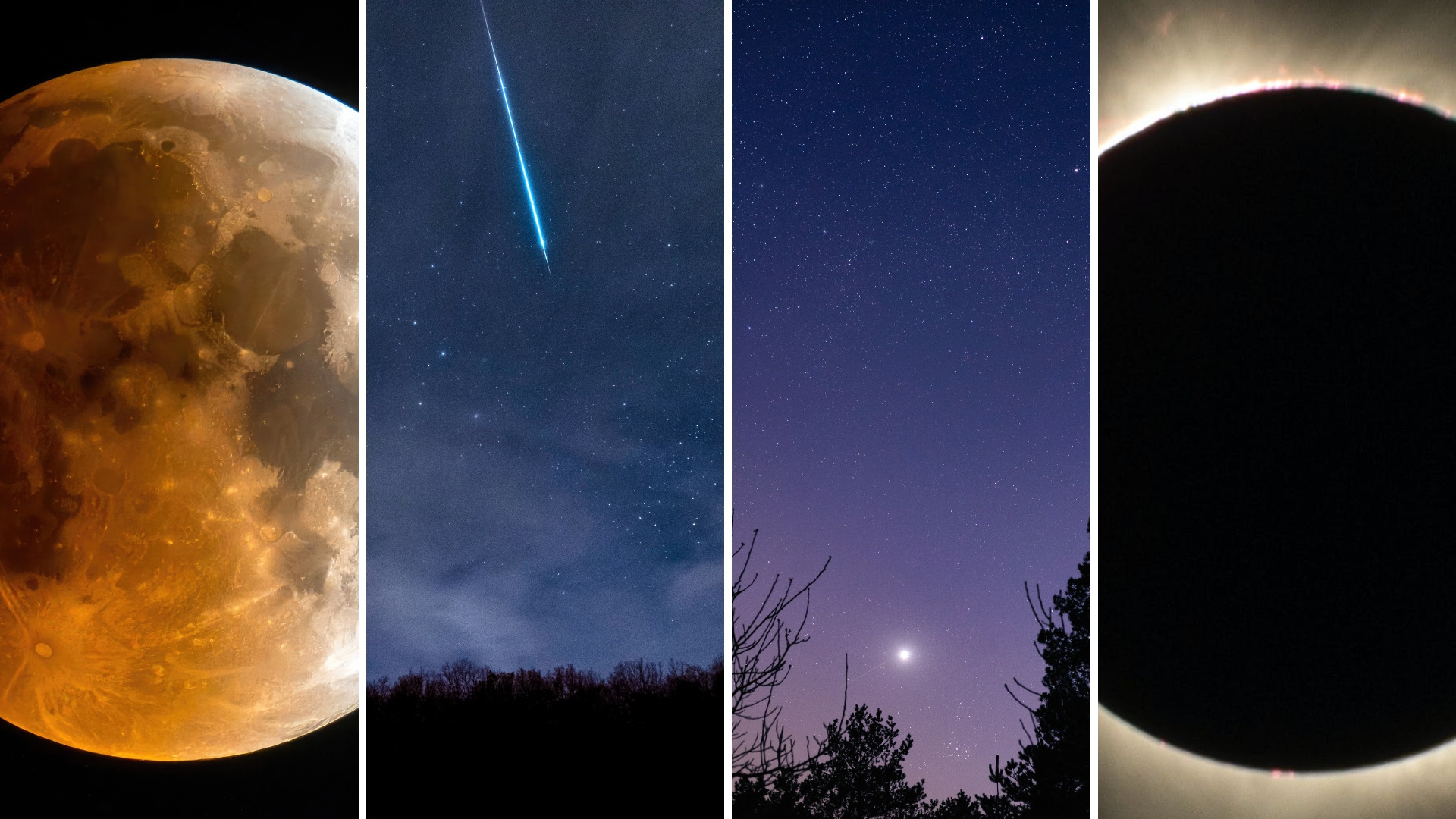The gravitational wave background of the universe has been heard for the 1st time
In a historic first, astronomers have detected low-frequency gravitational waves using a galaxy-sized antenna of millisecond pulsars in the Milky Way.
Astronomers have heard the faint hum of gravitational waves echoing throughout the universe for the first time.
For nearly a decade, scientists have been hunting for the gravitational wave background, a faint but persistent echo of gravitational waves thought to have been set off by events that took place soon after the Big Bang and the mergers of supermassive black holes throughout the cosmos. While such a background was long theorized by physicists and sought by astronomers, signals of gravitational waves that make up that background have been hard to detect due to being faint, in addition to vibrating at decade-long timescales. Now, long-term observations have finally confirmed their presence.
In a highly anticipated and globally coordinated announcement on Wednesday (June 28), teams of scientists worldwide have reported the discovery of the "low pitch hum" of these cosmic ripples flowing through the Milky Way.
While astronomers don't definitively know what's causing the hum, the detected signal is "compelling evidence" and consistent with theoretical expectations of gravitational waves emerging from copious pairs of "the most massive black holes in the entire universe" weighing as much as billions of suns, said Stephen Taylor, a gravitational wave astrophysicist at Vanderbilt University in Tennessee who co-led the research.
Related: What are gravitational waves?
Hints of the same signal were announced in a series of papers published by scientists in China, India, Europe and Australia. They say the signals may be coming from merging supermassive black holes that are caught in cosmic dances, circling each other in orbits that shrink across millions of years. During this process, they release energy in the form of gravitational waves that reverberate throughout the universe — waves astronomers now say they have detected.
Scientists report that the observed background hum of gravitational waves has grown in significance over time, providing tantalizing proof that there may be hundreds of thousands or even millions of supermassive black holes about to merge in the next few hundred thousand years, even though the gargantuan objects themselves haven't yet been spotted.
Breaking space news, the latest updates on rocket launches, skywatching events and more!
Cosmic lighthouses as gravitational wave detectors
To detect the gravitational wave background, astronomers studied fast-spinning stars called millisecond pulsars, which are dead stars that spin up to 700 times per second with astonishing regularity, blasting out beams of light from their magnetic poles, which are seen as "pulses" when they flicker in Earth's direction.
Such cosmic lighthouses can help spot gravitational waves from black holes that are supermassive, millions to billions times larger than our sun. In comparison, the Laser Interferometer Gravitational-Wave Observatory (LIGO) network can only detect gravitational waves originating from smaller black holes that are up to 10 times as massive as the sun.
If the yawning stretch of space between Earth and the pulsars were absolutely empty, then light from the flashing cosmic clocks would take the same time to reach Earth every time they pulse in our direction. In actuality, the timing of the pulses is influenced by factors such as the gas and dust in the interstellar medium and motions of pulsars as well as Earth in the Milky Way.
Gravitational waves, too, stretch and compress the space-time fabric between us and the pulsars, distorting their otherwise meticulously regular pulses from anywhere between tens of nanoseconds to five or more years, resulting in the light flashes arriving earlier or later than normal.
In the new research, the "critical evidence" that betrays the source of the signals to be supermassive black holes is a unique pattern found in the arrival times of pulses from a galaxy-sized cosmic antenna of nearly 70 millisecond pulsars in the Milky Way, according to a consortium of astronomers known as The North American Nanohertz Observatory for Gravitational Waves (NANOGrav). Gravitational wave signals from black hole binaries overlap "like voices in a crowd" and result in an incessant hum that embeds as a unique pattern in the pulsar timing data, scientists say.
Scientists extracted that pattern by observing lighthouse-like beams from pairs of pulsars. Using various radio telescopes like the now-collapsed Arecibo Observatory in Puerto Rico, the Green Bank Observatory in West Virginia, the Karl G. Jansky Very Large Array in New Mexico and the Canadian Hydrogen Intensity Mapping Experiment (CHIME) in Canada, they collected data about the timing of those pulses every month for 15 years. Then, they calculated the difference between the pulses' actual arrival times and their predicted arrival times — which they could estimate within 1 microsecond, comparable to measuring the distance to the moon to within a thousandth of a millimeter, scientists say.
The much sought-after gravitational wave signals were embedded in those differences, Taylor said. This is the first time that scientists have found compelling evidence for such patterns of inconsistency etched by a backdrop of gravitational waves, whose effects on pulsars' light flashes were predicted by Einstein's theory of general relativity back in 1916.
"We are extraordinarily excited to see this pattern pop out finally," said Taylor.
Crossing the final threshold
Scientists know that when black holes merge, their gravity interacts with nearby stars, which drains the black holes' orbital energies and nudges them increasingly closer to the point of becoming a single black hole. A simple model suggests that after black holes get within 3.2 light-years of one another other, they merge by radiating gravitational waves. However, other models have suggested that black holes span timescales longer than the universe itself in that they stall their merger when they reach that 3.2 light-years mark.
"At one point, scientists were concerned that supermassive black holes in binaries would orbit each other forever, never coming close enough together to generate a signal like this," Luke Zoltan Kelley, who is an assistant professor at the University of California, Berkeley and part of the NANOGrav collaboration, said in a statement.
So how those black holes reduce their orbit beyond that distance and eventually merge — known as the "final parsec problem" — has not been very well understood.
"To get these types of high amplitudes that we are seeing, we need fairly massive black holes, and they need to form binaries quite frequently and evolve quite efficiently," said Kelley.
If the discovery pans out and the signals being detected do end up being from binary black holes, "then they absolutely had to have passed the final parsec one way or another," he added.
Four separate studies on the discovery of the gravitational wave background have been published in The Astrophysical Journal Letters:
The NANOGrav 15-year Data Set: Evidence for a Gravitational-Wave Background
The NANOGrav 15-year Data Set: Observations and Timing of 68 Millisecond Pulsars
The NANOGrav 15-Year Data Set: Detector Characterization and Noise Budget
The NANOGrav 15-year Data Set: Search for Signals from New Physics
Two additional studies have been accepted by The Astrophysical Journal Letters for publication at a later date.

Sharmila Kuthunur is an independent space journalist based in Bengaluru, India. Her work has also appeared in Scientific American, Science, Astronomy and Live Science, among other publications. She holds a master's degree in journalism from Northeastern University in Boston.


